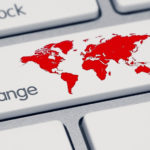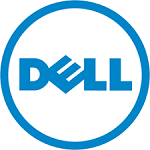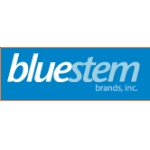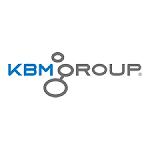Customer Engagement
Accredited Consulting Service for Mr. Jackson MBA BS Accredited Executive Consultant (AEC)
The Appleton Greene Accredited Consultant Service (ACS) for Customer Engagement is provided by Mr. Jackson and provides clients with four cost-effective and time-effective professional consultant solutions, enabling clients to engage professional support over a sustainable period of time, while being able to manage consultancy costs within a clearly defined monthly budget. All service contracts are for a fixed period of 12 months and are renewable annually by mutual agreement. Services can be upgraded at any time, subject to individual client requirements and consulting service availability. If you would like to place an order for the Appleton Greene Customer Engagement service, please click on either the Bronze, Silver, Gold, or Platinum service boxes below in order to access the respective application forms. A detailed information guide for this service is provided below and you can access this guide by scrolling down and clicking on the tabs beneath the service order application forms.
Bronze Client Service
Monthly cost: USD $1,000.00
Time limit: 5 hours per month
Contract period: 12 months
SERVICE FEATURES
Bronze service includes:
01. Email support
02. Telephone support
03. Questions & answers
04. Professional advice
05. Communication management
To apply – CLICK HERE

Silver Client Service
Monthly cost: USD $2,000.00
Time limit: 10 hours per month
Contract period: 12 months
SERVICE FEATURES
Bronze service plus
01. Research analysis
02. Management analysis
03. Performance analysis
04. Business process analysis
05. Training analysis
To apply – CLICK HERE
Gold Client Service
Monthly cost: USD $3,000.00
Time limit: 15 hours per month
Contract period: 12 months
SERVICE FEATURES
Bronze/Silver service plus
01. Management interviews
02. Evaluation and assessment
03. Performance improvement
04. Business process improvement
05. Management training
To apply – CLICK HERE
Consultant profile
Mr Jackson is an approved Executive Consultant at Appleton Greene and he has experience in marketing, e-business and customer service. He has achieved a Masters of Business in Administration and a Bachelor of Science in Business and Marketing. He has industry experience within the following sectors: Banking & Financial Services; Retail; Technology; Consumer Goods and Media & Marketing. He has had commercial experience within the following countries: United States of America, or more specifically within the following cities: Chicago IL; New York NY; Atlanta GA; Los Angeles CA and San Francisco CA. His personal achievements include: global CRM strategy; 360 degree customer view; data driven marketing implementation; global consumer and BtoB data and data accuracy & quality. His service skills incorporate: consumer engagement; customer monetization; customer loyalty; marketing integration and customer analytics.
To request further information about Mr. Jackson through Appleton Greene, please CLICK HERE.
Executive summary
Customer Engagement
Today’s customers expect to have a satisfying experience every time they interact with a company. But the nature of those interactions has changed dramatically over the past decade. The proliferation of mobile devices, the importance of social media, the expansion of e-commerce, and the initial implementations of the Internet of Things all have created an environment where customer contact is more frequent and more varied than ever before. Providing the kind of amazing customer engagement that results in long-term loyalty demanding companies completely rethink their approach to modern marketing. Companies that can deliver engagement successfully, and seamlessly, across touch points—are more competitive and profitable. To deliver a world class customer engagement, companies need a well-oiled marketing machine with the four building blocks of data, actionable insights, strategies, and technology. Marketers must flip the model and see the world from their customers’ point of view, and design and builds strategies and brand experiences that connect, inspire, and delight.
The Customer Engagement Solutions I help marketers develop and implement, lower attrition and solidify relationships by tapping customer insights that can only come from understanding their entire shopping experience—in stores, at home online, and now with mobile, and everywhere in between. Customer engagement processes are designed to bring together your siloed data sets and can combines them with demographics, psychographics, share of wallet data, and more.
My methodologies bring the experience and discipline of a seasoned consulting professional, the creative brainpower of a digital guru and deep technical expertise. While I can help you in setting up your CRM to bringing your brand vision to life, that doesn’t begin to scratch the surface of what we can do together. We start by immersing ourselves in your business to understand where you’re at and where you want to go. And then we’ll assemble the right capabilities to help you meet challenges and realize your customer vision. If you want to gain new insights that help you understand your customers, implement engagement strategies and grow sales, we should talk.
Service Methodology
The Heartbeat of Customer Engagement Marketing: Are you a data-driven marketer?; Are you a marketer who understands beyond the shadow of a doubt what components of your marketing mix are driving interactions along specific stages of the customer journey?: Are you in complete control of customizing the delivery of messages to a tailored audience, across multiple devices and channels?
Over the last five years, new enterprise marketing solutions have emerged that provide complete, granular control—and which have dramatically increased the efficacy of inbound and outbound efforts and the rate at which we learn more about our customers. Many brands know a lot about their audiences, but that knowledge has been traditionally disconnected from the execution of advertising and marketing campaigns. More often than not, brands would simply assume their existing audience composition and estimated reach already served their business goals.
We have advanced to such a point that enables marketers to reduce waste to nearly zero through audience-based targeting methodologies, which tailor brand messages to the granular wants, preferences, and habits of customers. This combination of targeting and customization leads to higher performance and efficiency, squeezing more out of one’s marketing budget.
A modern marketer knows engagement marketing solutions are based on four crucial layers: Technology and Platforms; Analytics; Data; Engagement Strategy. The Data layer revolves around a Data Management Platform, or DMP. The Analytics layer revolves around a combination of performance reporting and customer insight tools. The strategy layer is where ads and messages are delivered and interfaced with consumers, and can include DSPs, ad networks, site optimizers, CRM, and the rest of the media mix.
For brands to be successful, marketers need to review their current ecosystem of partners and tools and understand how each fits into their customer engagement marketing structure. They can then attempt to integrate the technology stack themselves or else find a solution that unites these layers. Modern marketing is both art and science. Marketing pros must educate colleagues about new ways to use customer data to drive customer marketing, and they must apply the latest tools and techniques to attract and engage customers and prospects.
Service Options
Companies can elect whether they just require Appleton Greene for advice and support with the Bronze Client Service, for research and performance analysis with the Silver Client Service, for facilitating departmental workshops with the Gold Client Service, or for complete process planning, development, implementation, management and review, with the Platinum Client Service. Ultimately, there is a service to suit every situation and every budget and clients can elect to either upgrade or downgrade from one service to another as and when required, providing complete flexibility in order to ensure that the right level of support is available over a sustainable period of time, enabling the organization to compensate for any prescriptive or emergent changes relating to: Customer Service; E-business; Finance; Globalization; Human Resources; Information Technology; Legal; Management; Marketing; or Production.
Service Mission
Mr. Jackson is an experienced customer marketing and strategy professional with over thirty years of global experience as a multinational corporate executive, business consultant, entrepreneur and academic. During his professional tenure he has worked with companies in many different countries to help them win customers and grow their businesses by excelling at delivering memorable and compelling customer experiences through innovation of strategic customer value management. His experience working with diverse functional groups within companies is a powerful asset in enabling companies navigate customer experience and customer value innovation challenges in global markets.
Known as a strategic thinker and implementer, he inspires his clients to adopt adaptable mindsets to routine and strategic business problems by listening, engaging, and responding to the market place differently than they have in the past. His strategic thinking is reflected in his many articles and speeches and his book, “Strategic Database Marketing” is recognized as a leading source for marketers.
Service objectives
The following list represents the Key Service Objectives (KSO) for the Appleton Greene Customer Engagement service.
- Ongoing Dialog
Customer engagement is no longer a series of one-off experiences—it’s an ongoing dialogue. Companies need to be good listeners in the digital age, and that requires a new set of skills. It means listening to customers who are already having conversations about brands –yours and others—in traditional online channels as well as over the social Web. So jump into those conversations in a genuine and human way. Foster trust and form relationships through open, honest interactions over time—interactions that create positive experiences and outcomes for your customers. Positive outcomes include answering questions, solving problems, hearing ideas and supporting them (when possible), and also amplifying praise. Another aspect of this spectrum is the relationships that your customers form with each other. The peer-to-peer relationships are core to the social Web. Because of course, your customers won’t just be interacting with you, they’ll talk amongst themselves, sharing their perspectives across Twitter, Facebook, LinkedIn, and even YouTube. Your job isn’t just to sell your product, it’s also to facilitate an active, passionate online community around your product. - Results Driven
Although communication with your customers is an ongoing dialogue, you need not be chatting just for the sake of it. When you engage your customers, have a goal in mind, whether it’s improving your product or nurturing loyalty and increasing sales. While traditionally the product team manages product and marketing is responsible for increasing brand awareness and driving sales, the lines are blurred now. Nurturing an ongoing and genuine relationship with your customers will naturally make a major impact in both these arenas. Naturally, how you engage with your customers impacts how customers view your brand. 70% of Americans are willing to spend an average of 13% more with companies who they feel provide above-par customer service. That means that all your customer engagement efforts should lead clearly in the direction of resolution. Know what the outcome should be, and provide your customers with clear tools that make it easy and efficient for them to get what they need. - Anytime, Anywhere
In the past, company-customer interaction happened in siloed, closed-off settings. Customers had to make a phone call or write an email. But now, we’re living in an “always-on” world ruled by the mobile experience. In 2011, customers were using mobile apps 10 times a day and a growing number of customers have used an app to buy a product. But here’s the big news: an astounding 78% used mobile apps for customer service purposes. In other words, if you’re not engaging your customers on-the-go—in the context of their daily lives—you’re essentially neglecting them, or are at least missing an opportunity to nurture the relationship through an open, honest interaction. You want to be able to interact with your customers in the context of their daily lives. Not only are you able to provide them with better, more immediate service, but you also gain loyalty and stay in the forefront of their minds. When the time comes to make a purchase, they’ll choose the product they’ve come to trust through a series of positive experiences. - Mutually Beneficial
The new customer engagement strategy should feel less like a marketing and sales campaign, contest, or tool, and more like a well-developed friendship founded on the basis of interdependent needs and mutual respect. The feedback you get from your customers isn’t just important for you, it’s important for them, as well. If you can listen to what your customers are saying and improve the product and their experience, everybody wins. You get more loyal customers; they get what they really need and want. The relationship you build is a two-way street. On one hand, your customers feel heard, and they can see the ways they’re actually contributing to your company. At the same time, you get free feedback, and have the opportunity to improve your business, thereby by attracting more customers. - Customer Driven
Remember the days when cold-calling part of your marketing strategy? Now, imagine the opposite of a cold call, because that’s how customer engagement works today. Your customers decide. It’s truly customer-driven. Remember the days when cold-calling part of your marketing strategy? Now, imagine the opposite of a cold call, because that’s how customer engagement works today. Your customers decide if and when to communicate. Your job is simply to give them the tools that make the interaction and communication easy and natural. Not only should these tools be easily accessible and highly visible, but they should also offer options for different types of conversation. Do they have a question? Do they want to post a rave review? Are they experiencing a technical difficulty? Present your customers with an intuitive tool for communicating with you, and let them initiate. When you put control in their hands, you’re more likely to be able to meet their needs, but you also win their trust, and ultimately, you build the loyal customer base you need to grow and succeed.
Achievements
Dell
Dell Computers have been the leaders in computer world for more than two decades. Dell has been empowering countries, communities, customers and people everywhere to use technology to realize their dreams and possibilities. Since the first Dell PC was introduced in 1986, Dell has continued to shape the industry by breaking new ground and pioneering critical developments in home, small business and enterprise computing. The Dell business connects with more than 5.4 billion customers every day with earnings of $14.9 billion comprising a net profit of $584 million. Dell’s continuous research and development (R&D) have proven efforts to reach the globe, which is driven by some of the industry’s foremost product designers and engineers. The core of Dell computers is always been in innovation approach with a commitment to deliver new and better solutions and technologies that fulfils and meets demands and customer needs. They accept Partnerships with varied industry such as software, hardware and component suppliers and by generating a uniquely broad perspective on the computing world and the accessories. Dell believes in innovations which begin in-house supported by global team of top engineers, product designers and technical experts. Along with a team effort with Dell’s strategic partners to formulate and implement the different strategies. Their mission is to deliver innovative and cost-effective solutions that meet today’s customer requirements and innovative work seamlessly is carried out in existing environments and their products. Dell is uniquely positioned into the market which has a strong impact of and on the industry trends. They maintain strong internal and in-house development capabilities. They have a strategy to be partners, rather than to compete, with top technology suppliers and manufacturers. They enable industry standards and technologies through industry groups and strategic partners. In such a way Dell innovates and delivers value and needs of customers. I have impacted Dell’s business with the following capabilities: Created a global 360 view of customer with social, site and digital marketing sources; Developed a corporate data strategy and ecosystem; Facilitated CRM objectives and strategy with customer data; Managed global data accuracy and quality; Interface with global partners and manage key relationships; Manage global consumer and SMB customer data; Integrate digital marketing platform with customer data
Publicis
Publicis Groupe S.A. provides marketing, communication, and digital transformation services worldwide. It offers creative solutions, such as direct marketing, customer relationship management, sales promotion and point-of-sale marketing, public relations, corporate and financial communication, events communication, and multicultural or ethnic communication services, as well as engages in the video production and broadcast business. The company also provides media consulting/media planning and media buying services. In addition, it is involved in the creation of corporate or commercial Websites and Intranets, online direct marketing consulting, social network expertise, search engine optimization, Internet ads, and all forms of Internet and mobile communication; and provision of communications in the areas of healthcare and well-being under the Digitas Health and Publicis Health Media brands. The company serves client in consumer goods, finance, automobile, TMT, health, food and drink, leisure/energy/luxury, distribution, and other sectors. Publicis Groupe S.A. was founded in 1926 and is headquartered in Paris, France. I have worked with two global divisions of Publicis: ARC As head of customer data driven marketing, I managed global implementation of database marketing, CRM and customer data strategy for Publicis clients; Performics As an advisor to the company, I provided expertise to drive traditional CRM capabilities to expand their business
Disney
The monarch of this magic kingdom is no man but a mouse: Mickey Mouse. The Walt Disney Company is the world’s largest media conglomerate, with assets encompassing movies, television, publishing, and theme parks. Its Disney/ABC Television Group includes the ABC television network and 10 broadcast stations, as well as a portfolio of cable networks including ABC Family, Disney Channel, and ESPN (80%-owned). Walt Disney Studios produces films through imprints Walt Disney Pictures, Disney Animation, and Pixar. It also owns Marvel Entertainment and Lucasfilm, two extremely successful film producers. In addition, Walt Disney Parks and Resorts runs its popular theme parks including Walt Disney World and Disneyland. I have worked as an advisor to Disney parks and entertainment on customer marketing and database marketing.
VISA
Paper or plastic? Visa hopes you choose the latter. Visa operates the world’s largest consumer payment system (far ahead of rivals MasterCard and American Express) and boasts nearly 2.5 billion credit and other payment cards in circulation across more than 200 countries. As part of its business, the company licenses the Visa name to member institutions, which issue and market their own Visa products and participate in the VisaNet payment system that provides authorization, processing, and settlement services. The company also offers debit cards, Internet payment systems, value-storing smart cards, and traveler’s checks. Visa’s network connects thousands of financial institutions worldwide. I have worked with VISA on many customer marketing, analytics and data management projects.
Bluestem Brands
Bluestem Brands, Inc., a multi-brand online retailer, provides a selection of name-brand, private label, and non-branded merchandise through Internet Websites and catalogs serving low to middle income consumers in the United States. It offers home products, including housewares, bed and bath products, lawn and garden products, home furnishings, and hardware products; entertainment products, such as electronics, video games, toys, and sporting goods; and fashion products comprising apparel, footwear, cosmetics, fragrances, and jewelry under the Appleseed’s, Bedford Fair, Blair, Draper’s & Damon’s, Fingerhut, Gettington, Gold Violin, Haband, LinenSource, Norm Thompson, Old Pueblo Traders, PayCheck Direct, Sahalie, Tog Shop, and Wintersilks retail brands. The company was formerly known as Fingerhut Direct Marketing, Inc. and changed its name to Bluestem Brands, Inc. in February 2010. Bluestem Brands, Inc. was founded in 2002 and is based in Eden Prairie, Minnesota. Bluestem Brands, Inc. is a subsidiary of Bluestem Group Inc. I held the position of VP Marketing for On-Line Brands. In that position my achievements included: Managed start-up of e commerce retail brand; Developed and optimized on-line channels including Affiliates, CSE, SEM/SEO, Retargeting, and Display Advertising; Developed creative multi-tier customer engagement and loyalty program; Integrated off-line channels including Catalog, Magazines and Cable; Drove $5 million of on-line sales in 4 months; Created a comprehensive acquisition and subsequent customer financial measurement system driving financial plan; Managed complex cross-functional environment
More detailed achievements, references and testimonials are confidentially available to clients upon request.
Industries
This service is primarily available to the following industry sectors:
Banking & Financial Services
Assets of the largest 1,000 banks in the world grew by 6.8% to a record US$96.4 trillion while profits declined by 85% to US$115 billion. Growth in assets in adverse market conditions was largely a result of recapitalization. EU banks holds the largest share of the total, 56%. Asian banks’ share amounts to 14%, while the share of US banks amounts to 13%. Fee revenue generated by global investment banking totals US$66.3 billion. The United States has the most banks in the world in terms of institutions i.e. 7,085 including 82,000 branches. This is an indicator of the geography and regulatory structure of the USA, resulting in a large number of small to medium-sized institutions in its banking system. China’s top 4 banks have in excess of 67,000 branches with an additional 140 smaller banks. Japan has 129 banks and 12,000 branches. Germany, France, and Italy each had more than 30,000 branches – more than double the 15,000 branches in the UK. Financial services are the economic services provided by the finance industry, which encompasses a broad range of organizations that manage money, including credit unions, banks, credit card companies, insurance companies, accountancy companies, consumer finance companies, stock brokerages, investment funds and some government sponsored enterprises. The financial services industry represents 20% of the market capitalization of the S&P 500 in the United States. Finance industry income as a proportion of GDP is 7.5%, and the finance industry’s proportion of all corporate income is 20%. The financial services industry constitutes the largest group of companies in the world in terms of earnings and equity market capitalization. However it is not the largest category in terms of revenue or number of employees. It is also a slow growing and extremely fragmented industry, with the largest company (Citigroup), only having a 3% US market share.
Consumer Goods
In economics, any commodity which is produced and subsequently consumed by the consumer, to satisfy its current wants or needs, is a consumer good or final good. Consumer goods are goods that are ultimately consumed rather than used in the production of another good. For example, a microwave oven or a bicycle which is sold to a consumer is a final good or consumer good, whereas the components which are sold to be used in those goods are called intermediate goods. For example, textiles or transistors which can be used to make some further goods. When used in measures of national income and output, the term “final goods” only includes new goods. For instance, the GDP excludes items counted in an earlier year to prevent double counting of production based on resales of the same item second and third hand. In this context the economic definition of goods includes what are commonly known as services. Manufactured goods are goods that have been processed in any way. As such, they are the opposite of raw materials, but include intermediate goods as well as final goods. Consumer goods are goods which are intended for everyday private consumption. They cover a large product portfolio including food and non-food categories in order to meet consumer demand. They are further classified in fast moving consumer goods (FMCG) and slow moving consumer goods (SMCG). The definitions are based on how fast products are sold to the customer, a determining factor in the rotation of goods. SMCG are goods with a useful life longer than a year comprising items such as household appliances, furniture and home improvement products. These items have a lower sales frequency and are not rotating as rapidly as FMCG. The competitive landscape of the consumer packaged goods (CPG) industry is shaped by global leading CPG companies such as US-based Procter & Gamble (P&G), Unilever, L’Oréal and Nestlé. Many companies invest large amounts of money for the development of new products in accordance with recent market trends and the latest research findings. As many manufacturers operate globally, product packaging and labeling regulations have to be fulfilled in order to meet the country-specific requirements. In addition, product formulas may have to be adapted to suit different consumer tastes.
Media & Marketing
The mass media are diversified media technologies that are intended to reach a large audience by mass communication. The technologies through which this communication takes place varies. Broadcast media such as radio, recorded music, film and television transmit their information electronically. Print media use a physical object such as a newspaper, book, pamphlet or comics, to distribute their information. Outdoor media is a form of mass media that comprises billboards, signs or placards placed inside and outside of commercial buildings, sports stadiums, shops and buses. Other outdoor media include flying billboards (signs in tow of airplanes), blimps, and skywriting. Public speaking and event organizing can also be considered as forms of mass media. The digital media comprises both Internet and mobile mass communication. Internet media provides many mass media services, such as email, websites, blogs, and internet based radio and television. Many other mass media outlets have a presence on the web, by such things as having TV ads that link to a website, or distributing a QR Code in print or outdoor media to direct a mobile user to a website. In this way, they can utilize the easy accessibility that the Internet has, and the outreach that Internet affords, as information can easily be broadcast to many different regions of the world simultaneously and cost-efficiently. The organizations that control these technologies, such as television stations or publishing companies, are also known as the mass media. Corporate media is a term which refers to a system of mass media production, distribution, ownership, and funding which is dominated by corporations and their CEOs. It is sometimes used as a pejorative term in place of mainstream media, which tends to also be used as a derisive term, to indicate a media system that does not serve the public interest. The global broadcast media industry offers significant opportunities for industry players due to increasing mobile television subscribers and a surging entertainment and media market. The market is expected to continue its expansion and reach approximately US $597 billion with a CAGR of 4.5% over the next five years.
Retail
Retail is the sale of goods and services from individuals or businesses to the end-user. Retailers are part of an integrated system called the supply chain. A retailer purchases goods or products in large quantities from manufacturers directly or through a wholesale, and then sells smaller quantities to the consumer for a profit. Retailing can be done in either fixed locations like stores or markets, door-to-door or by delivery. An increasing amount of retailing is done using online websites, electronic payment, and then delivered via a courier or via other services. Rising GDP growth, burgeoning population, greater disposable income, and increasing consumer spending are combining to drive the Global Retail industry and opportunities for retail segment players. The market is forecast to reach an estimated $20,002 billion with a CAGR of 3.9% over the next five years. The retail industry comprises establishments engaged in selling merchandise or commodities for personal or household consumption, mainly consisting of apparel and accessories, technology, food and beverages, home improvement, specialty, pharmaceuticals, and others. Recently, as developed nations begin to emerge from recession, their economies recover, and unemployment rates begin to fall, the market segments are experiencing some renewed growth. The retail industry is highly fragmented and is dependent on macroeconomic factors such as GDP, disposable income, and consumer spending. Asia Pacific (APAC) dominates the industry, representing 35% of the global market. The APAC retail industry is expected to drive the market and grow at the highest rate among all regions. The global economic recession, inflation, and high unemployment rates are some of the challenges that are negatively affecting the retail industry. Conversely, some factors that are likely to boost sales in the industry include urbanization, technological growth, increase in product demand and selection, and the continued popularity of online purchasing. A combination of factors such as demographics and consumer spending habits impacts market dynamics significantly.
Technology
Information technology (IT) is the application of computers and telecommunications equipment to store, retrieve, transmit and manipulate data, often in the context of a business or other enterprise. The business value of information technology lies in the automation of business processes, provision of information for decision making, connecting businesses with their customers, and the provision of productivity tools to increase efficiency. The global IT Services industry holds significant opportunities for industry players due to increasing IT spending in the healthcare, retail, and transportation sectors, among others. The market is forecast to reach an estimated US $1,147 billion with a CAGR of more than 5%. The global IT services industry comprises services related to the application of business and technical expertise to enable organizations to create, manage, optimize, and access information and business processes. The industry’s scope includes product support services such as hardware and software maintenance and professional services such as IT consulting, development, and integration services. North America, with 42% of the global market share, dominates the highly fragmented global IT services industry. Outsourcing locations such as India, China, Vietnam, and the Philippines are anticipated to be key drivers because of their low-cost labor and skilled talent pools. The APAC IT services industry is expected to register the highest growth rate among all regions during the forecast period and lead the industry. Government-backed reforms are expected to contribute to significant increases in spending for IT investments. In addition, by generating new opportunities for IT vendors globally, cloud computing is expected to reshape the industry. It is anticipated to offer immense opportunity to penetrate in the small and medium business sector. High volatility in currency exchange rates, a shrinking talent pool, and high labor costs in developed countries are some of the major challenges for the IT services industry. The increasing global demand for systems, software, and services, as well as IT spending by governments, and the banking and financial sectors are likely to boost the IT services market. The industry is highly correlated with economic cycles as IT services are project based and often represent discretionary spending.
Locations
This service is primarily available within the following locations:
San Francisco CA
Tourism, the city’s largest private-sector employer, is the backbone of the San Francisco economy. Its frequent portrayal in music, film, and popular culture has made the city and its landmarks recognizable worldwide. Small businesses with fewer than 10 employees and self-employed firms make up 85% of city establishments as lately, it has been particularly popular with entrepreneurs establishing “start-up” companies. Many large financial institutions, multinational banks and venture capital firms are based in or have regional headquarters in the city. With over 30 international financial institutions, seven Fortune 500 companies, and a large support infrastructure of professional services – including law, public relations, architecture and design. San Francisco’s economy has increasingly become tied to San Jose and Silicon Valley, its neighbors to the south, sharing the need for highly educated workers with specialized skills. San Francisco has been positioning itself as a biotechnology and biomedical hub and research center. The Mission Bay neighborhood, site of a second campus of UCSF, fosters a budding industry and serves as headquarters of the California Institute for Regenerative Medicine, the public agency funding stem cell research programs state-wide.
New York NY
New York is a global hub of international business and commerce and is one of three “command centers” for the world economy (along with London and Tokyo). The city is a major center for banking and finance, retailing, world trade, transportation, tourism, real estate, new media as well as traditional media, advertising, legal services, accountancy, insurance, theatre, fashion, and the arts in the United States. New York City has been ranked first among 120 cities across the globe in attracting capital, business, and tourists. Many major corporations are headquartered in New York City, including 45 Fortune 500 companies. New York is also unique among American cities for its large number of foreign corporations. One out of ten private sector jobs in the city is with a foreign company.
Atlanta GA
The Atlanta metropolitan area is the eighth-largest economy in the country and 17th-largest in the world. Corporate operations comprise a large portion of the Atlanta’s economy, with the city serving as the regional, national, or global headquarters for many corporations. Atlanta contains the country’s third largest concentration of Fortune 500 companies, and the city is the global headquarters of corporations such as The Coca-Cola Company, The Home Depot, Delta Air Lines, AT&T Mobility, UPS, and Newell-Rubbermaid. Over 75 percent of Fortune 1000 companies conduct business operations in the Atlanta metropolitan area, and the region hosts offices of about 1,250 multinational corporations. Many corporations are drawn to Atlanta on account of the city’s educated workforce; nearly 43% of adults in the city of Atlanta have college degrees, compared to 27% in the nation as a whole and 41% in Boston. Delta Air Lines, the city’s largest employer and the metro area’s third largest, operates the world’s largest airline hub at Hartsfield-Jackson Atlanta International Airport and has helped make Hartsfield-Jackson the world’s busiest airport, both in terms of passenger traffic and aircraft operations. Media is also an important aspect of Atlanta’s economy. The city is a major cable television programming center. Information technology, an economic sector that includes publishing, software development, entertainment and data processing has, garnered a larger percentage of Atlanta’s economic output. Indeed, Atlanta contains the fourth-largest concentration of information technology jobs in the United States.
Los Angeles CA
Sept. 4, 1781 is the city’s official birthdate, when 44 village settlers from the Mexican provinces of Sonora and Sinaloa made their home in what is now Downtown Los Angeles. Two of the 44 settlers were Spaniards, while the others were Indians, Blacks and Mestizos of mixed ancestry. The Spanish named the new settlement El Pueblo de Nuestra Senora la Reina de Los Angeles, or The Town of Our Lady the Queen of the Angels. After the territory changed hands from Spain to Mexico, the town was officially declared a city in 1835. Los Angeles became part of the U.S. in January 1847. The City of Los Angeles holds many distinctions. L.A. is the entertainment capital of the world, a cultural mecca boasting more than 100 museums, and a paradise of idyllic weather. From tourist attractions like the Walk of Fame’s collection of stars (numbering more than 2,614 and growing by one or two a month) to career opportunities like those presented in the expanding tech industry, Los Angeles is the place to be. It is the only city in North America to have hosted the Summer Olympics twice. Downtown L.A. is the largest government center outside of Washington, D.C. Los Angeles has the only remaining wooden lighthouse in the state (located in San Pedro’s Fermin Park) and the largest historical theater district on the National Register of Historic Places (located Downtown on Broadway). Los Angeles is on the leading edge of several growth industries. L.A. County, with more than 87,000 jobs in the fashion industry, has surpassed New York’s fashion district workforce. The L.A. five-county area also has more than 700,000 people at work in health services/biomedical activities and 190,000 people in aerospace/technology. Here are some more facts and figures about Los Angeles: the city, the county and the region. Leisure and hospitality is a leading industry in Los Angeles, employing 510,500 in 2015. In 2016, the leisure and hospitality sector added 21,400 jobs in Los Angeles County, representing a 4.4% year-over-year increase in employment. In addition to its signature industries – entertainment, tourism, and fashion-its enormous and diversified economy is home to the largest port complex in the Western Hemisphere and the largest number of manufacturing jobs of any county in the country. Other major industries include health care, education, and knowledge creating and business services.
Chicago IL
Chicago is known as The Windy City. Walking around town, you might suspect that this nickname came from the winds off Lake Michigan which can, on occasion, make for some windy days. Truth be told, Chicago is far from being excessively windy. In fact, according to the United States National Climatic Data Center, Chicago does not rank high on the list of windy cities. The origin of the saying Windy City comes from politics; some saying it may have been coined by rivals like New York City as a derogatory reference; at the time the two cities were battling for the 1893 World’s Fair, which Chicago ultimately won. Others say that the term originated from the city’s strong political climate. Finally, the city is also known as The City That Works as promoted by long-time Mayor Richard M. Daley, which refers to Chicago’s labor tradition and its willingness to tackle grand civic projects. Daley and his father, former Mayor Richard J. Daley, were continuous voted into office for many terms and governed the city for decades. As other manufacturing cities like Cleveland and Buffalo went into decline, Chicago thrived, transforming from a city of culture and manufacturing to a city of culture and finance. Chicago now houses the world’s largest future exchanges (the Chicago Mercantile Exchange). With Richard M. Daley deciding not to run for mayor again due to his ailing wife, and former White House Chief of Staff Rahm Emanuel resigning from that post to become mayor of Chicago, the city elected its first Daley-less administration with Emanuel since Mayor Richard M. Daley was in office from April 1989 to May 2011. While the city has many great attractions in its huge central/downtown area, lots of Chicagoans live and play outside of the central district as well. Travelers also go to the city’s vibrant neighborhoods to soak up the local nightlife, sample the wide range of fantastic dining, and see other sights that are a part of Chicago. Thanks to the city’s massive public transit system, which includes over 140 Chicago Transit Authority subway/elevated train stations, a separate city/suburban Metra rail network, and bus routes criss-crossing the city every few blocks apart, all parts of Chicago are indeed accessible. Chicago still loves Carl Sandburg and his poems, but the city shucked off the hog butcher’s apron a long time ago. In terms of industry, there’s little that distinguishes Chicago from any other major city in America, save for size. The Chicago Board of Trade stock wizards. Boing moved its headquarters to Chicago amid much fanfare a few years ago United Airlines, Abbott and Abbvie are other international companies with headquarters in town. The Big Five consulting firms all have one or more offices in the Loop. And there’s always construction work in the city; the city has a strong union presence. For younger workers, the museums in the downtown area are always looking for high-enthusiasm guides, and the retail outlets on the State Street are also good options. And with so many colleges and universities in the city, study abroad opportunities abound.
Clients
This service’s current clients or employers include:
Dell
Dell Computers have been the leaders in computer world for more than two decades. Dell has been empowering countries, communities, customers and people everywhere to use technology to realize their dreams and possibilities. Since the first Dell PC was introduced in 1986, Dell has continued to shape the industry by breaking new ground and pioneering critical developments in home, small business and enterprise computing. The Dell business connects with more than 5.4 billion customers every day with earnings of $14.9 billion comprising a net profit of $584 million. Dell’s continuous research and development (R&D) have proven efforts to reach the globe, which is driven by some of the industry’s foremost product designers and engineers. The core of Dell computers is always been in innovation approach with a commitment to deliver new and better solutions and technologies that fulfils and meets demands and customer needs. They accept Partnerships with varied industry such as software, hardware and component suppliers and by generating a uniquely broad perspective on the computing world and the accessories. Dell believes in innovations which begin in-house supported by global team of top engineers, product designers and technical experts. Along with a team effort with Dell’s strategic partners to formulate and implement the different strategies. Their mission is to deliver innovative and cost-effective solutions that meet today’s customer requirements and innovative work seamlessly is carried out in existing environments and their products. Dell is uniquely positioned into the market which has a strong impact of and on the industry trends. They maintain strong internal and in-house development capabilities. They have a strategy to be partners, rather than to compete, with top technology suppliers and manufacturers. They enable industry standards and technologies through industry groups and strategic partners. In such a way Dell innovates and delivers value and needs of customers.
Bluestem Brands
Bluestem Brands, Inc., a multi-brand online retailer, provides a selection of name-brand, private label, and non-branded merchandise through Internet Websites and catalogs serving low to middle income consumers in the United States. It offers home products, including housewares, bed and bath products, lawn and garden products, home furnishings, and hardware products; entertainment products, such as electronics, video games, toys, and sporting goods; and fashion products comprising apparel, footwear, cosmetics, fragrances, and jewelry under the Appleseed’s, Bedford Fair, Blair, Draper’s & Damon’s, Fingerhut, Gettington, Gold Violin, Haband, LinenSource, Norm Thompson, Old Pueblo Traders, PayCheck Direct, Sahalie, Tog Shop, and Wintersilks retail brands. The company was formerly known as Fingerhut Direct Marketing, Inc. and changed its name to Bluestem Brands, Inc. in February 2010. Bluestem Brands, Inc. was founded in 2002 and is based in Eden Prairie, Minnesota. Bluestem Brands, Inc. is a subsidiary of Bluestem Group Inc.
Acxiom Corporation
Acxiom Corporation operates as a technology and enablement services company in the United States, Europe, the Asia-Pacific, and internationally. The company operates through three segments: Connectivity, Audience Solutions, and Marketing Services. The Connectivity segment provides a foundational identity resolution layer, which enables its clients to identify and reach consumers across channels and measure the impact of marketing on sales. This segment offers LiveRamp IdentityLink, an identity resolution service that ties data back to real people and makes it possible to onboard that data for people-based marketing initiatives across digital channels. Its IdentityLink serves brands, marketing technology providers, data providers, publishers, and agencies. The Audience Solutions segment offers consumer demographics products, including InfoBase products to marketers with the ability to identify and reach the right audience with the right message across traditional and digital channels; and AbiliTec, which enables brands recognize individuals and households using various types of input variables and connect identities online and offline. The Marketing Services segment offers marketing database services, strategy and analytics, and Impact email and cross-channel data-driven marketing solutions. The company serves companies and organizations in the financial services, insurance, information services, direct marketing, retail, consumer packaged goods, technology, automotive, healthcare, travel, and communications industries, as well as in non-profit and government sectors. Acxiom Corporation was founded in 1969 and is headquartered in Conway, Arkansas.
Acxiom Corporation – Click Here
DMB&B
D’Arcy Masius Benton & Bowles was an advertising agency in the United States with 131 offices in 75 countries. D’Arcy Masius Benton & Bowles, or “DMB&B”, was established in November 1985 by the merger of the Benton & Bowles (B&B) and D’Arcy-MacManus Masius (D-MM) advertising agencies. John Bowen oversaw the merger and the firm’s drive toward globalization. In 1999 the company had worldwide billings of $6.7 Billion Dollars and was the 11th largest advertising agency in the world. DMB&B was acquired by French firm Publicis and closed in 2002. The D’Arcy Masius Benton & Bowles archives were transferred to the “Hartman Center for Sales, Advertising and Marketing History,” part of the David M. Rubenstein Rare Book and Manuscript Library at Duke University in 1991. An additional, and final, donation took place in 2001.
Knowledgebase Marketing
KBM group is a data, analytics and technology integration marketing services company committed to helping our clients achieve optimized marketing results and customer relationships. As marketing data experts for over 30 years, we help companies manage data as a strategic asset. We transform data for relevant interactions with consumers and design engagement ecosystems for synchronized communications. We help the world’s best-known brands evolve along the data-driven marketing continuum for improved marketing performance, mutually valuable customer relationships and stronger competitive advantage. As data experts for over 30 years, KBM Group collects, connects and enriches data so that it is a strategic marketing asset. From our roots in consumer data, we’ve grown to provide sophisticated analytics and insights that fuel relevant, intelligent marketing messages and content. We help marketers integrate, manage, analyze and optimize their data to engage more effectively with their customers and prospects. We also integrate automated marketing components to deliver personalized consumer interactions via a comprehensive, end-to-end engagement platform that crosses channels and synchronizes conversational communications that are “in the moment”. We help some of the world’s best-known brands deliver consistent, resonant consumer experiences. Let us help you progress along the data-driven marketing continuum for improved marketing performance, more profitable customer relationships and stronger competitive advantage. KBM Group’s parent company, Wunderman, is part of the Young & Rubicam Group and a member of WPP (NASDAQ: WPPGY). KBM Group is the only company in the Wunderman network focused solely on data management and optimization. Our data technology, processes, and thought leadership deliver breakthrough results in reducing costs, increasing sales and enabling clients worldwide to dramatically and cost efficiently grow their businesses.
Benefits
Marketing
- Customer engagement
- Customer satisfaction
- Customer loyalty
- Greater innovation
- Customer culture
- Focused targeting
- Competitive advantage
- Competitive positioning
- Customer acquisition
- Customer value
E-business
- Digital strategy
- Business growth
- Business strategy
- Customer loyalty
- Enhanced performance
- Improved responsiveness
- Complex analysis
- Lower costs
- Greater convenience
- Social media
Customer Service
- Customer loyalty
- Customer satisfaction
- Beat competitors
- Lower costs
- Feedback
- Repeat business
- Creating niches
- Higher profits
- Reputation
- Customer share
Bronze Service
Monthly cost: USD $1,000.00
Time limit: 5 hours per month
Contract period: 12 months
Bronze service includes:
01. Email support
02. Telephone support
03. Questions & answers
04. Professional advice
05. Communication management
SERVICE DESCRIPTION
The Bronze Client Service (BCS) for Customer Engagement provides clients with an entry level option and enables client contacts to become personally acquainted with Mr. Jackson over a sustainable period of time. We suggest that clients allocate up to a maximum of 5 Key Employees for this service. Your Key Employees can then contact the consultant via email, whenever they feel that they need specific advice or support in relation to the consultant’s specialist subject. The consultant will also be proactive about opening and maintaining communications with your Key Employees. Your Key Employees can list and number any questions that they would like to ask and they will then receive specific answers to each and every query that they may have. Your Key Employees can then retain these communications on file for future reference. General support inquiries will usually receive replies within 48 hours, but please allow a period of up to 10 business days during busy periods. The Bronze Client Service (BCS) enables your Key Employees to get to know their designated Appleton Greene consultant and to benefit from the consultant’s specialist skills, knowledge and experience.
Silver Service
Monthly cost: USD $2,000.00
Time limit: 10 hours per month
Contract period: 12 months
Bronze service plus
01. Research analysis
02. Management analysis
03. Performance analysis
04. Business process analysis
05. Training analysis
SERVICE DESCRIPTION
The Silver Client Service (SCS) for Customer Engagement provides more time for research and development. If you require Mr. Jackson to undertake research on your behalf, or on behalf of your Key Employees, then this would understandably require more time and the Silver Client Service (SCS) accommodates this. For example, you may want your consultant to undertake some research into your management, performance, business, or training processes, with a view towards providing an independent analysis and recommendations for improvement. If any research and development, or business analysis is required, then the Silver Client Service (SCS) is for you.
Gold Service
Monthly cost: USD $3,000.00
Time limit: 15 hours per month
Contract period: 12 months
Bronze/Silver service plus
01. Management interviews
02. Evaluation and assessment
03. Performance improvement
04. Business process improvement
05. Management training
SERVICE DESCRIPTION
The Gold Client Service (GCS) for Customer Engagement is intended for more detailed evaluation and assessment, that may require your Key Employees to have monthly meetings or interviews with Mr. Jackson. These meetings and interviews can be conducted over the telephone, Skype, or by video conference if required. The consultant can also attend your business premises, an Appleton Greene office, or another mutually beneficial location, but please note that clients are responsible for the costs of any disbursements separately, including travel and accommodation. This service enables you to integrate the specific skills, knowledge and experience of your designated consultant into your Key Employee management team. The Gold Client Service (GCS) can also incorporate training workshops, business presentations and external meetings with customers, suppliers, associations, or any other business-related stakeholders.
Platinum Service
Monthly cost: USD $4,000.00
Time limit: 20 hours per month
Contract period: 12 months
Bronze/Silver/Gold service plus
01. Project planning
02. Project development
03. Project implementation
04. Project management
05. Project review
SERVICE DESCRIPTION
The Platinum Client Service (PCS) for Customer Engagement is our flagship service and will be required if you need Mr. Jackson to facilitate the planning, development, implementation, management, or review of a particular project relating to his specialist subject, which would obviously require more time and dedication. This service enables you to reserve up to 12.5% of the consultant’s working month and provides a more hands-on service as and when required. If you need more time than this, then this can always be arranged, subject of course to the consultant’s ongoing availability. The benefit of having an external consultant involved in projects is they provide an independent perspective and are not influenced by internal politics, day-to-day responsibilities, or personal career interest. They provide objectivity, specific knowledge, skills and experience and will be entirely focused upon the tasks at hand. The Platinum Client Service (PCS) will provide your organization with a valuable resource as and when you need it.








































